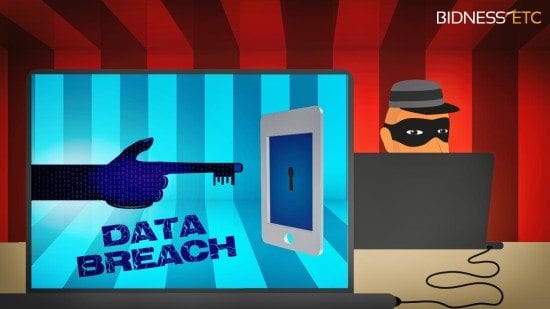Data breaches can be incredibly costly. Be it lawsuits, regulatory fines, or a fall in stock price, the financial consequences of a breach can bring even the largest organization to its knees. However, in the face of economic damage, it’s too easy to overlook the vast reputational impacts that often do more harm to a business. After all, it’s relatively easy to recoup monetary losses, less so to regain customer trust.
In recent years, data loss prevention (DLP) solutions have emerged as a viable option for many organizations to prevent data breaches. This article will examine the potential reputational damages of a data breach, how DLP solutions can stop them, and how organizations can rebuild trust in the wake of a breach.
Reputational Damage and Data Breaches
Modern consumers understand the value of their data like never before. Younger generations have grown up in a data-centric world, while digital transformation efforts have forced older generations to get with the times. Moreover, regulations now force organizations to notify affected individuals in the event of a breach. As such, businesses can no longer sweep a data breach under the rug. They will negatively impact sales and customer retention.
But it’s important to remember that reputational damage isn’t limited to consumer perceptions; stakeholder, shareholder, and potential buyer perception is equally, if not more, important. In 2020, the Information Commissioner’s Office (ICO) fined Marriott Hotels £18.4 million for a data breach the company suffered in 2018. The kicker? Marriott itself never fell afoul of a cyberattack; Starwood Hotels did. When Marriot acquired Starwood in 2016, they failed to discover that their new purchase suffered an intrusion into their systems in 2014 and paid the price years later. Business leaders are unlikely to repeat Marriot’s mistake; data breaches make organizations an unviable acquisition target.
How Data Loss Prevention Solutions Stop Data Breaches
DLP solutions are software or hardware-based security tools designed to help organizations prevent the unauthorized disclosure or leakage of sensitive or confidential information by identifying, monitoring, and protecting sensitive data across different endpoints, networks, and storage systems.
DLP solutions prevent data breaches by:
- Discovering and classifying data – DLP solutions automatically scan and analyze an organization’s systems, networks, and endpoints with predefined patterns, regular expressions, or machine learning algorithms to identify sensitive data.
- Protecting data at rest – DLP solutions leverage encryption, access controls, and data masking techniques to reduce the risk of unauthorized data access and rendering data unusable should an unauthorized user access it.
- Monitoring data in motion – DLP solutions inspect network traffic, email content, file transfers, and other data flows to identify possible security risks.
- Protecting endpoints – DLP solutions typically include endpoint agents that monitor and control data flows on individual devices. These agents monitor file transfers, sensitive data exfiltration, or unauthorized uploads.
- Initiating incident response procedures – DLP solutions alert security teams to policy violations or potential data breaches in real-time, allowing them to quickly initiate incident response procedures and mitigate the impacts of a potential breach.
- Monitoring user behavior – Behavior monitoring compares user behavior to pre-established baselines to identify deviations and alert security teams to potential threats.
How to Rebuild Trust in the Wake of a Breach
Even if an organization does everything possible to prevent a data breach, there is still a chance that one will occur. This is an unfortunate fact of life. Whether we like it or not, cybercriminals will always be one step ahead of the good guys; there’s very little we can do about that. As such, organizations must consider in advance how they can regain trust in the event of a breach.
To do so, organizations must:
- Acknowledge and take responsibility for the breach – Shirking responsibility never ends well. Organizations must promptly notify affected individuals of a data breach and be transparent about what happened, the extent of the damage, and the potential impacts. The truth will always come out and obfuscating it will only further damage trust.
- Communicate with customers and stakeholders – Organizations must keep customers and stakeholders informed of all developments.
- Prioritize security and remediation – Organizations must take immediate action to contain and mitigate the impacts of a data breach and conduct a thorough investigation to improve data security.
- Provide support and assistance – Organizations must provide the necessary support and assistance to affected individuals to regain their trust. For example, if cybercriminals steal personally identifiable information (PII), the organization should provide affected individuals with identity fraud monitoring services.
- Engage with stakeholders – Regaining stakeholders’ trust relies on clear and open communication. Organizations must seek feedback, address concerns, and respond to inquiries promptly and transparently.
For modern organizations, the reputational impacts of a data breach can be an existential threat. They can significantly impact sales, ruin potential merger or acquisition deals, and cause stock prices to tumble down. Organizations should implement data loss prevention solutions to prevent data breaches and their potential impacts. To rebuild trust after a data breach, organizations should respond quickly, communicate clearly with customers and stakeholders, and support and assist affected individuals.
Josh is a Content writer at Bora. He graduated with a degree in Journalism in 2021 and has a background in cybersecurity PR. He's written on a wide range of topics, from AI to Zero Trust, and is particularly interested in the impacts of cybersecurity on the wider economy.
The opinions expressed in this post belongs to the individual contributors and do not necessarily reflect the views of Information Security Buzz.




